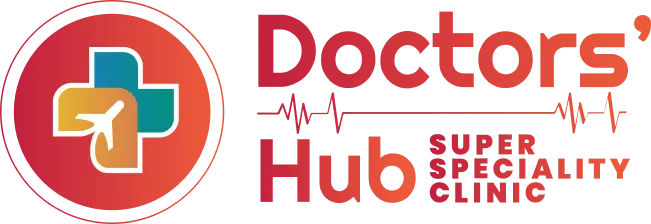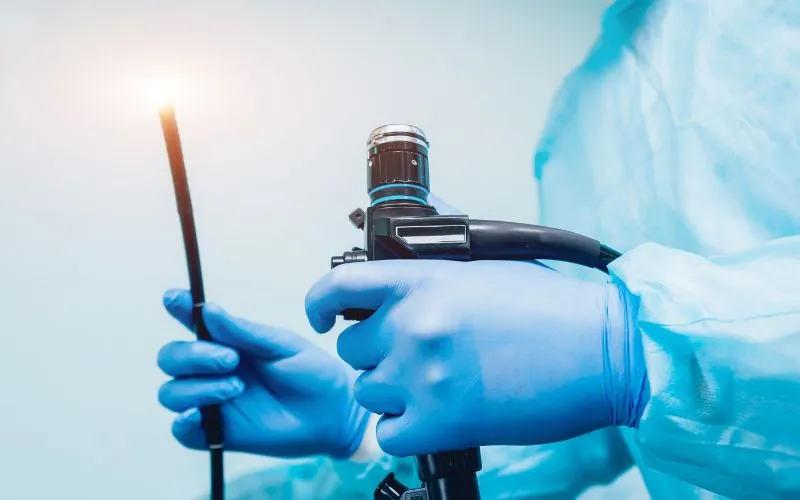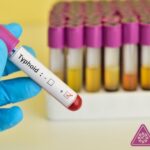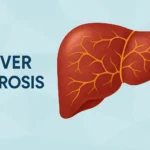An endoscopy is a procedure that involves inserting a scope into your body and taking photos or recordings of organs and other structures. It is being used by best doctor in Dwarka and surgeons to test and treat many illnesses. Several forms of endoscopy examine various organs. The most frequent forms of endoscopy in Dwarka, Delhi at Doctors’ Hub include colonoscopy, upper endoscopy, and laparoscopy.
What is an endoscopy?
An endoscopy is a medical procedure that allows a doctor to examine the inside of the body without major surgery. During an endoscopy, a doctor passes a long, flexible tube with a lens and camera called an endoscope through a natural opening into the body. The endoscope captures images or videos of the body parts and displays them on a screen for the doctor to see.
Endoscopy is done in these parts of the body
- Esophagus
- Stomach
- Colon
- Ears
- Nose
- Throat
- Heart
- Urinary tract
- Joints
- Abdomen
Types of endoscopy
These are the various types of endoscopy:
Anoscopy
Anoscopy is a medical procedure that uses a small, rigid tube called an anoscope to examine the anus and rectum. It can help diagnose conditions such as haemorrhoids, anal fissures, anal polyps, infections, and some cancers.
Procedure: A digital rectal exam is performed first, and then the anoscope is inserted a few inches into the rectum. The anoscope has a light on the end so the doctor can see the entire area. You might feel some discomfort during the procedure, but there’s usually no special preparation needed. However, you should empty your bladder and bowels before the procedure to make yourself more comfortable.
Arthroscopy
Arthroscopy is a minimally invasive surgery procedure that involves inserting an arthroscope into a joint through a small incision to examine and sometimes treat damage. The arthroscope is a small tube with a video camera, lenses, and a light that allows the surgeon to view the inside of the joint.
Procedure: The patient receives a general, local, or spinal anaesthetic. The surgeon makes a small incision near the joint, about the size of a buttonhole. The surgeon inserts the arthroscope into the incision. The surgeon may use other tools inserted through another incision for grasping, cutting, or probing
Bronchoscopy
A bronchoscopy is a procedure that uses a thin, lighted tube to examine the airways in the lungs. It can be used to diagnose and treat lung problems, such as:
- Tumours or bronchial cancer
- Airway blockage
- Narrowed areas in airways
- Inflammation and infections
- Interstitial pulmonary disease
- Causes of persistent cough
- Causes of coughing up blood
Procedure: A doctor inserts the bronchoscope through the mouth or nose into the lungs, usually taking about 30-45 minutes. The patient may receive sedative medicines, numbing gels or sprays, an intravenous line (IV), monitors to check blood pressure, heart rate, and oxygen level, and an oxygen mask or nasal tubing.
Cystoscopy
A cystoscopy is a surgery that allows an experienced surgeon to examine the inside of the bladder and urethra. It’s usually performed in a clinic, hospital, or provider’s office and can help identify problems with the urinary tract, such as infection, bleeding, narrowing, blockage, or early signs of cancer.
Procedure: During the procedure, a flexible, fibre optic scope is inserted into the urethra and the bladder through the urethra, with lenses similar to a microscope or telescope. The patient may be asked to empty their bladder, and a local anaesthetic may be used on the urethra. A cystoscopy usually takes up to 20 minutes.
Esophagoscopy
Esophagoscopy is a medical procedure that allows a doctor to examine the oesophagus using a thin, flexible, lighted tube called an oesophagoscope or endoscope. The esophagoscope has a lens and light for viewing, and may also have a tool to remove tissue samples for microscopic examination.
Procedure: During an esophagoscopy, the doctor inserts the endoscope through the mouth or nose and down the oesophagus to look for abnormal areas. The procedure helps doctors diagnose and treat problems with the oesophagus, stomach, intestine, and throat.
Gastroscopy
A gastroscopy, also known as an upper endoscopy, is a procedure that examines the upper digestive tract using a thin, flexible tube called an endoscope. The endoscope has a small camera and light at the end that transmits images to a monitor for a doctor to view.
Procedure: The procedure usually takes about 5 to 15 minutes, and involves the following steps:
- Anaesthetising the mouth and throat with a spray
- Removing any removable dentures
- Lying on your left side
- Swallowing so the gastroscope can enter your esophagus
- Slowly push the gastroscope into your stomach and down to the entrance of your duodenum.
Colonoscopy
A colonoscopy is a medical procedure that allows a doctor to examine the inside of the colon and rectum using a long, flexible tube called a colonoscope. The colonoscope has a small camera and light on one end and is inserted into the rectum and moved into the colon.
Procedure: A gastroenterologist usually performs a colonoscopy in a procedure room at a health care provider’s office or in a hospital or medical centre outpatient department. The procedure takes about 30 to 60 minutes and patients receive sedation and pain medication to make them more comfortable. The doctor will then slowly guide the colonoscope into the anus, through the rectum, and into the colon.
Neuroendoscopy
Neuroendoscopy is a method of obtaining tissue samples from a brain tumour. Doctors obtain tissue samples (biopsies) and examine them under a microscope. This helps your doctor choose the best treatment option for you. A neuroendoscopy may also be performed to drain fluid from the brain’s fluid-filled cavities (ventricles).
Procedure: The doctors make a small skin incision in the skull bone. The endoscope passes through a small tube through the brain into the spinal fluid spaces. The doctors then perform the surgery while viewing a screen that shows what the camera is seeing. Doctors can optionally leave a temporary drain tube in the fluid space, and then remove it. Then doctors cover or leave open the burr hole with a plate and then close the skin.
Laparoscopy
Laparoscopy is a surgical technique that examines the organs of the abdomen. It can also check a woman’s pelvic organs. Laparoscopy employs a narrow illuminated tube with a video camera. The tube is known as a laparoscope. It is inserted into a small cut (incision) in your stomach.
Procedure: The surgeon will make a tiny incision, often near your belly button. Air is pushed into your belly via the incision, allowing the surgeon to view the inside more readily. A thin, flexible tube with a camera inside (a laparoscope) is then inserted through the cut to display video pictures of the inside of your abdomen on a screen.
5 Benefits of Endoscopy for Early Diagnosis
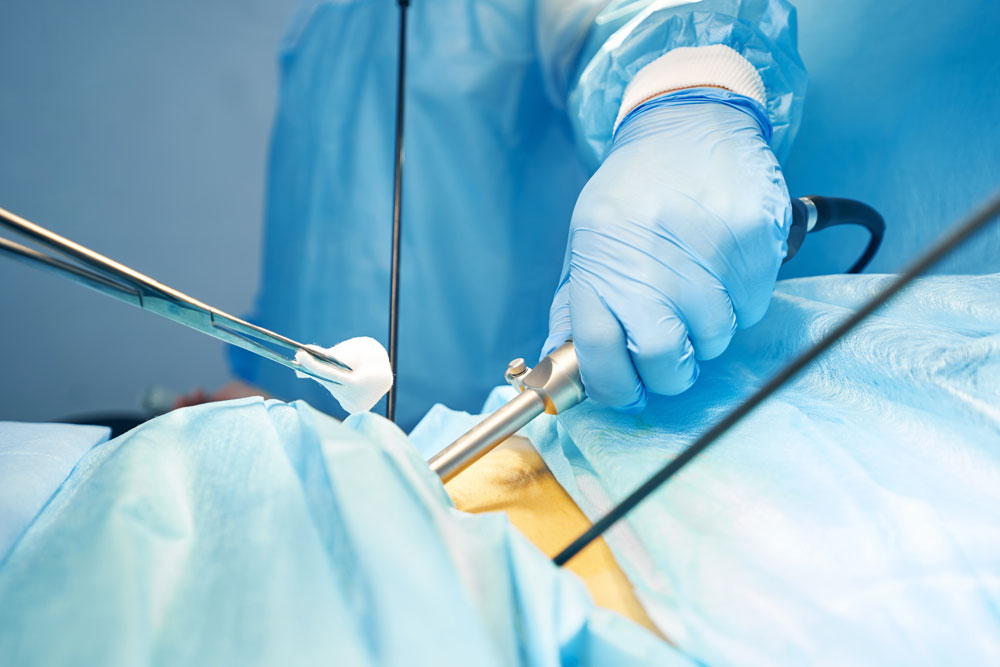
Endoscopy procedures allow doctors to look inside the body and detect problems quickly with precision. Here are five key benefits of endoscopy for test and diagnosis:
- Spot Diseases Early
Endoscopy helps identify health issues like cancers, ulcers, and GERD (gastroesophageal reflux disease) in their early stages. Catching these conditions early means better treatment options and improved chances of recovery. For instance, early stomach or colon cancer detection can lead to less invasive treatments and higher survival rates.
- Precise Diagnosis
Endoscopy provides a clear view of internal organs, making it more accurate than traditional X-rays. Doctors can easily spot abnormalities such as growths, inflammation, or blockages. This accuracy helps identify the exact cause of symptoms like persistent abdominal pain or unexplained bleeding.
- Immediate Treatment Options in Delhi
During the procedure, doctors can also treat issues on the spot. They can remove polyps, stop bleeding, or stretch a narrowed oesophagus without separate surgery. This saves time and reduces the need for additional procedures.
- Less Pain, Faster Recovery
Endoscopy does not involve large incisions. Patients do not experience intense pain and recover quickly. Most procedures are done on an outpatient basis, so there is no need for extended hospital stays.
- Safe and Reliable
Endoscopy is a safe procedure with minimal risks. Most patients only feel mild discomfort, and complications are rare. Its reliability makes it a trusted method for early diagnosing and treating health issues.
Conclusion
Even with pain medication, having a scope within your body does not seem particularly appealing. If it helps, consider the benefits it can give. It can occasionally reveal visual proof of problems that standard imaging, such as an ultrasound, may miss. An endoscopy can spare you from returning to the provider for multiple views. Certain biopsies can only be performed with an endoscope. Endoscopies are the new standard of care for some diseases. They allow for speedier procedures and shorter recuperation times.
Book a test at Delhi’s top Super Speciality clinic – Doctor’s Hub Super Speciality Clinic









